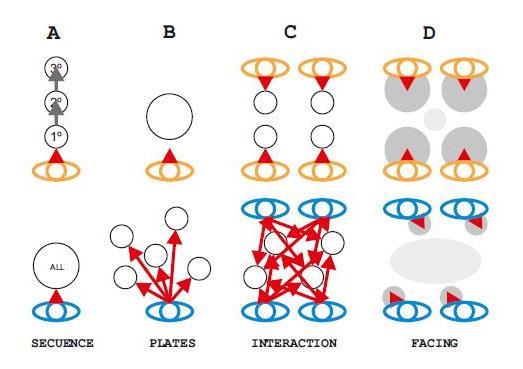DEVELOPMENT’S ILLNESS (3 of 3)
DIAGNOSIS:
Mainstream Developed Lifestyle isn’t working properly
-Live to produce →Produce to consume→Consume to Live →Exhaustion of resources
-Growing competition→ Harder work→Less time,more stress→Social Illness
-Sets aside moral values, importance of family and community and real value of life.
TREATMENT:
Develop a Hansik way of life!
Looking back to the case of South Korea, follows an attempt to rescue and reinforce positive cultural values: The idea is to translate all the values of the Hansik and spot the difference regarding the western table manners in order to extrapolate them and find possible premises that apply to Korean identity.

These premises are only a start-up for inspiration. In order to heal the society of Seoul it’s necessary to induce a social mechanism that fosters more confortable interactions in public space. Granting freedom and privacy to the individual without turning its back on them, making them feel supported as part of a whole not as an insignificant part of a supply chain, alleviating the perception of excessive demanding society.
Regarding dishes as metaphors of types of space: Korean private dishes are minimal though more specialized than western ones, instead shared dishes are key actors -> Private space should be confortable and focused and characteristic and public spaces should be emphasized.
“You with yourself somewhere” -Zen Meditation
Utmost private spaces (bedroom/meditation room) should follow this quote being comfortable with human scale and having a very personal and minimalistic character in order to give a sheltering feeling without overwhelming the individual.
- A. Freely design your paths // Preset pathways
- B. Melded singular spaces // Overall space that imprints the rest
- C. Sequence towards privacy // Clear private delimitations
- D. Coy approaches// Upfront approaches
If we look at Korean traditional architecture we find that it has elements that trigger social relations over other societies such as the traditional bench that skirts the perimeter of the house in order to be able to chat with someone who is outside from inside. There is also the different concept of doors common throughout all northeast Asia where it slips in between the wall disappearing at some time allowing continuity in space.
On the other hand I should clarify that this community spirit and open houses traditionally only took place between family members as Hanoks(traditional Korean houses) were usually arranged around patios conforming the Confucian patriarchy. This introvert architecture, as modern condominiums, left streets flanked by walls.
If we analyze former Korean customs and usage of space, we find some precepts are already exemplified: the concept of sharing spaces with a gradation of public and private in a way we don’t in western society:
- “Bangs”: they are rooms rented for hours for different uses: karaoke, friends’ party, watching movies…
- Public huge saunas 24-hour open: Koreans usually go with their family on weekends to relax and can spend an entire day even sleeping all together in the floor among others
- Examples of re-appropriating and sharing of public space or green areas such as ‘pocket parks,’ looked after and decorated by volunteer citizens.
‘The Hansik way of life’ advocates these differences and peculiarities that bring positive results.
“It is not our differences that divide us. It is our inability to recognize, accept, and celebrate those differences”.
–Audre Lorde






.png)
].gif)
.png)
].png)
].png)
].png)
.png)
].png)
.png)
